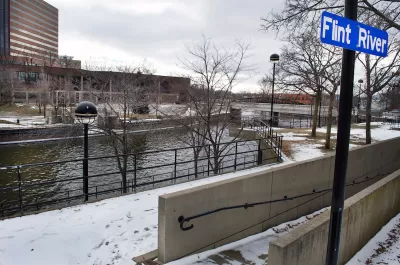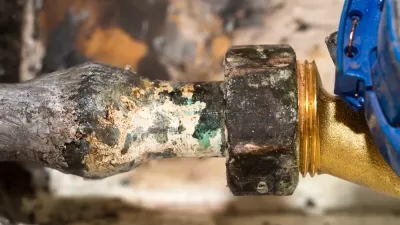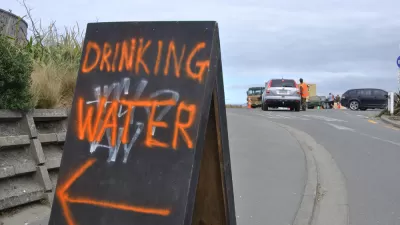A decade after the Flint crisis captured national attention, tens of thousands of US water transmission lines can still leach dangerous chemicals.

Despite the media coverage and outrage of residents in Flint, Michigan, communities around the country still face the risk of lead poisoning from corroded pipes, according to a report from Emily Kwong, Pien Huang, Rachel Carlson, and Rebecca Ramirez for NPR.
“In the last decade, the city's water quality has improved. Thousands of lead pipes in Flint have been replaced, but not all. That means that not every resident in Flint has clean, fresh water.” And the problem doesn’t stop in Flint. “A 2023 report from the EPA revealed that in 2021, lead made up 9% of the nation's service line infrastructure, representing an estimated 9.2 million pipes.”
Improvements to the 1991 Lead and Copper Rule proposed in late 2023 could finally require water systems to provide accurate information and enforce the replacement of lead pipes. However, a proposed exemption would give cities like Chicago an extension, letting them take multiple decades to replace infrastructure.
FULL STORY: 10 years after Flint, the fight to replace lead pipes across the U.S. continues

Manufactured Crisis: Losing the Nation’s Largest Source of Unsubsidized Affordable Housing
Manufactured housing communities have long been an affordable housing option for millions of people living in the U.S., but that affordability is disappearing rapidly. How did we get here?

Americans May Be Stuck — But Why?
Americans are moving a lot less than they once did, and that is a problem. While Yoni Applebaum, in his highly-publicized article Stuck, gets the reasons badly wrong, it's still important to ask: why are we moving so much less than before?

Research Shows More Roads = More Driving
A national study shows, once again, that increasing road supply induces additional vehicle travel, particularly over the long run.

Judge Halts Enforcement of Anti-Homeless Laws in Grants Pass
The Oregon city will be barred from enforcing two ordinances that prosecute unhoused residents until it increases capacity and accessibility at designated camping sites.

Advancing Sustainability in Los Angeles County Schools
The Los Angeles County Office of Education’s Green Schools Symposium brings together educators, students, and experts to advance sustainability in schools through innovative design, climate resilience strategies, and collaborative learning.

Using Old Oil and Gas Wells for Green Energy Storage
Penn State researchers have found that repurposing abandoned oil and gas wells for geothermal-assisted compressed-air energy storage can boost efficiency, reduce environmental risks, and support clean energy and job transitions.
Urban Design for Planners 1: Software Tools
This six-course series explores essential urban design concepts using open source software and equips planners with the tools they need to participate fully in the urban design process.
Planning for Universal Design
Learn the tools for implementing Universal Design in planning regulations.
City of Moreno Valley
Institute for Housing and Urban Development Studies (IHS)
City of Grandview
Harvard GSD Executive Education
NYU Wagner Graduate School of Public Service
City of Cambridge, Maryland
Newport County Development Council: Connect Greater Newport




























